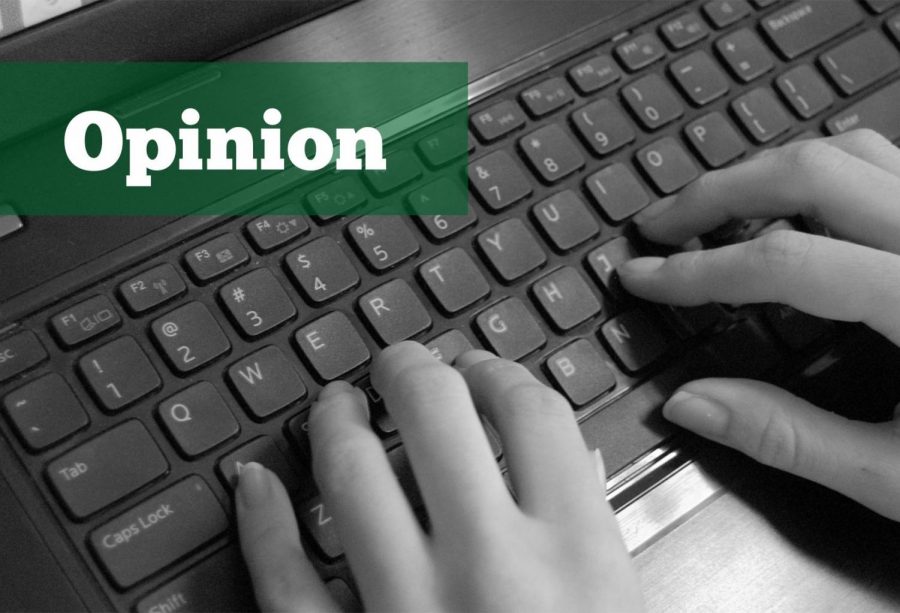EDITORIAL: Marywood falters with COVID-19 rules
April 16, 2021
It’s been over a year since the country first shut down due to the COVID-19 pandemic. Figuring out how to safely return to campus was not only a huge responsibility, but also a complicated task. Marywood has done a good job of keeping cases low and in turn allowing us to have some sense of normalcy with classes, but the response to combat the pandemic has left much to be desired.
Communication
Since the beginning of the pandemic, one of the most frequent complaints among students is the lack of communication from the university. Even when there is communication, it comes across as vague, leaving more questions than answers. Explaining the protocols like visitation and the HyBridge model took several emails for most students to understand.
Marywood clearly had no student input on how its rules would be set for the school year. This is backed up by the fact that the Covid Action Teams (CATs) is made up of administrators and only one faculty member, according to Public Relations Director Juneann Greco, who is on one of the CATs. Such an exclusion feels like the administration’s priority was the university and not its students.
This feeling is only strengthened by the one “mental health day” they allowed us to have instead of our usual week-long break this semester. Many students spent that day getting caught up on work they were behind on, not taking care of themselves. Marywood also took away both Holy Thursday and Easter Monday holidays from the spring semester without saying why. The loss of breaks has resulted in burnout, depression, and anxiety among students without much regard from the administration.
Conduct Violations
Although the administration was clear that violations of COVID rules would be handled through the conduct system, the severity of the punishments was not disclosed. Students have been suspended or put on probation for COVID violations, even if it was their first offense. This has been the case for a few members of the Wood Word staff.
There has also been inconsistency in enforcing the rules put in place for the pandemic. In the Learning Commons, masks are required. However, students were able to go to the second or third floors and remove their masks without getting caught, whereas the Nazareth Dining Hall has staff members watching lines to enforce social distancing.
Housing and Residence Life
Marywood’s Housing and Residence Life was extremely strict with its policies this year. Residents were not allowed to move furniture in their rooms, but no real reason was given for this policy. Coronavirus won’t stop spreading to a roommate if their bed isn’t six feet away, especially in a shared space with shared surfaces and forced air.
Room changes were another aspect of Housing and Residence Life that presented problems. This year, unless necessary, like in a dangerous living situation, roommates were essentially stuck with each other in the room assigned to them. Normally, there is a room change period early in the semester.
It’s apparent that consideration was not given to the idea that the number of quarantine cases could exceed the amount of quarantine space, since many residents of Madonna Hall were forced to move out of their rooms to make room for additional students in quarantine.
How were the rooms prepared to be quarantine rooms? Is there not a risk of cases spreading through the air ducts? How can the students living amidst quarantine rooms feel safe?
According to Tyler Ward, director of Housing and Residence Life, his office “works with student health services to set aside spaces that will not put other students at risk.” Despite his assurances, having students with COVID so close to students who are not infected is unnerving.
Residents at Marywood are also unable to visit other residents not living in their hall. While students are supposed to have their masks on always, even if off-campus, realistically that just doesn’t happen. In fact, the argument could be made that not allowing residents to socialize in residence halls drove students to find places off campus to socialize. This makes contact tracing harder if someone were to contract COVID off-campus.
In an ideal situation, Marywood’s campus would be like its own bubble. Residents would be able to visit other residents, since they are in frequent contact with each other anyway. However, residence life is not the only area in which Marywood failed to meet the challenge.
Quarantine and Testing
The pandemic brought about new challenges for the university in terms of quarantine and testing. Both were included in the school’s plan to reopen in the fall. While it’s understandable for the administration to have the execution of quarantine and testing be a little rocky at the beginning of the year, at this point the system should be a well-oiled machine. Frankly, it’s not.
In the fall, Marywood did not require students to be tested before returning to school. After some reconsideration, students were required to have a negative test 3-5 days before returning to campus for the spring semester. However, one negative test at the beginning of the semester isn’t going to keep everyone safe forever. Other schools have mandatory testing each week. Marywood’s sports teams get tested frequently before games and competitions; why doesn’t every student need to be tested? Is it the cost? If cost is the driving factor behind that decision, the administration should have used any of its financial resources, like the endowment or even instituting a fee for students to cover the cost of testing.
Marywood has also struggled with enforcing quarantine. Since the school cannot directly mandate a student to stay confined to their room until test results come back or ten days have passed, many students have been free to leave their rooms to get food without reprimand. A potentially infected student venturing into a populated area like the dining hall, where diners are maskless, is a recipe for disaster that could lead to additional infections that could have been prevented.
It feels as if Marywood has only given a 50% effort in combating the pandemic. The school is very strict with rules that don’t need to be that restrictive and very lackadaisical with the rules that should be enforced with an iron fist. Perhaps with better, clearer communication, including input from students, some of these issues could have been resolved before the year began.
Going forward into the fall semester, we believe it’s important for every student, staff, faculty and administration member to be fully vaccinated before returning to campus. If the university plans to have in-person classes, everyone being vaccinated would ensure the highest level of safety possible.





